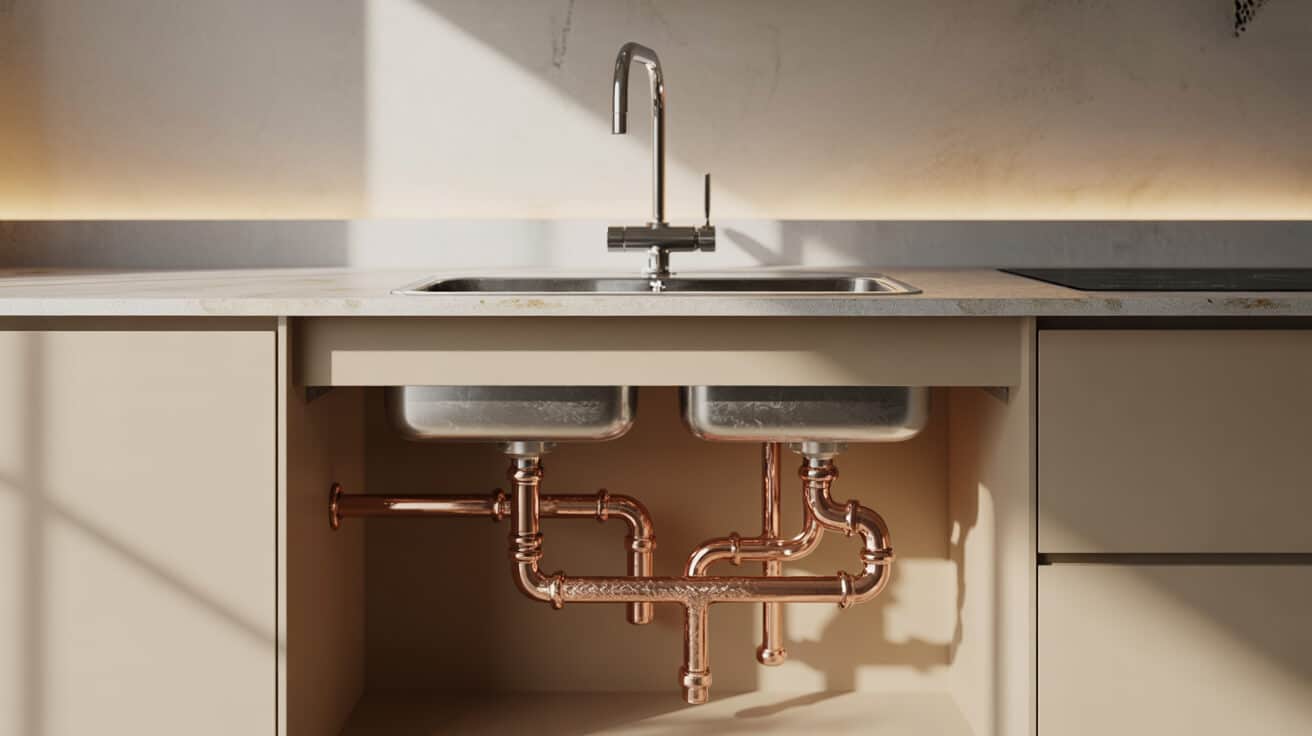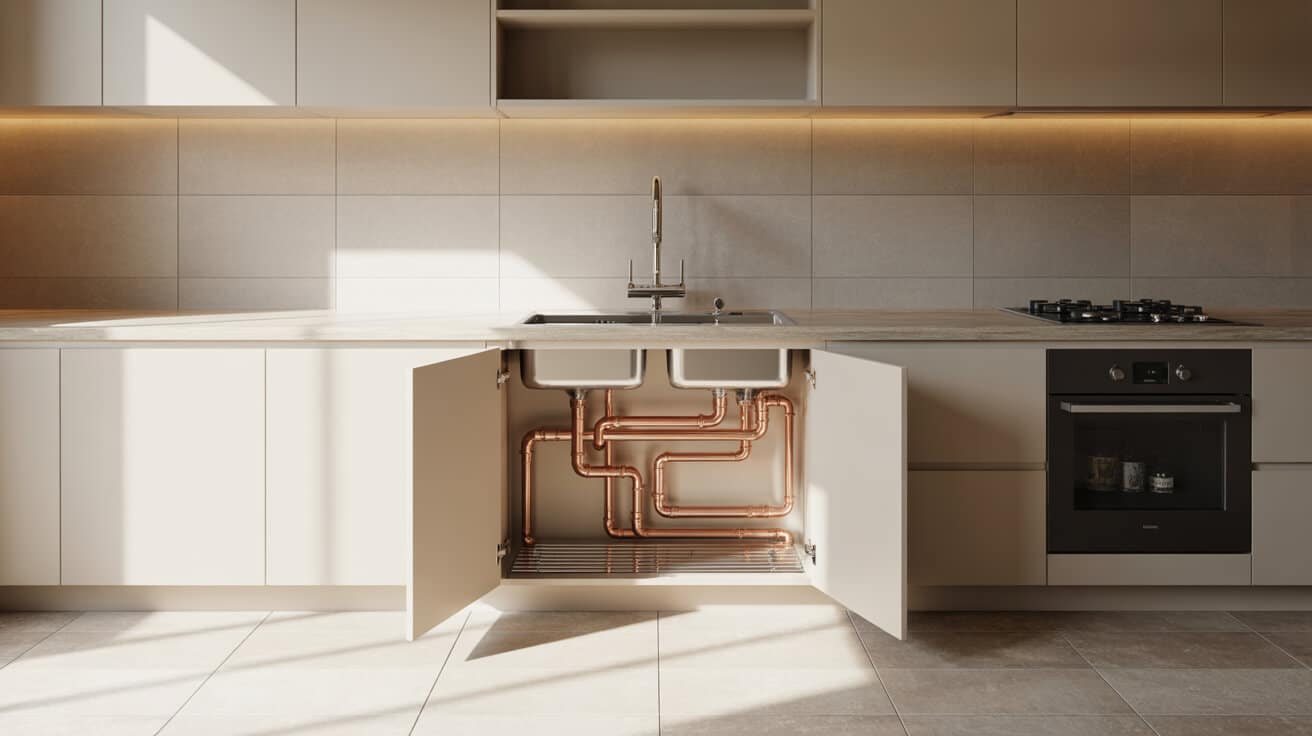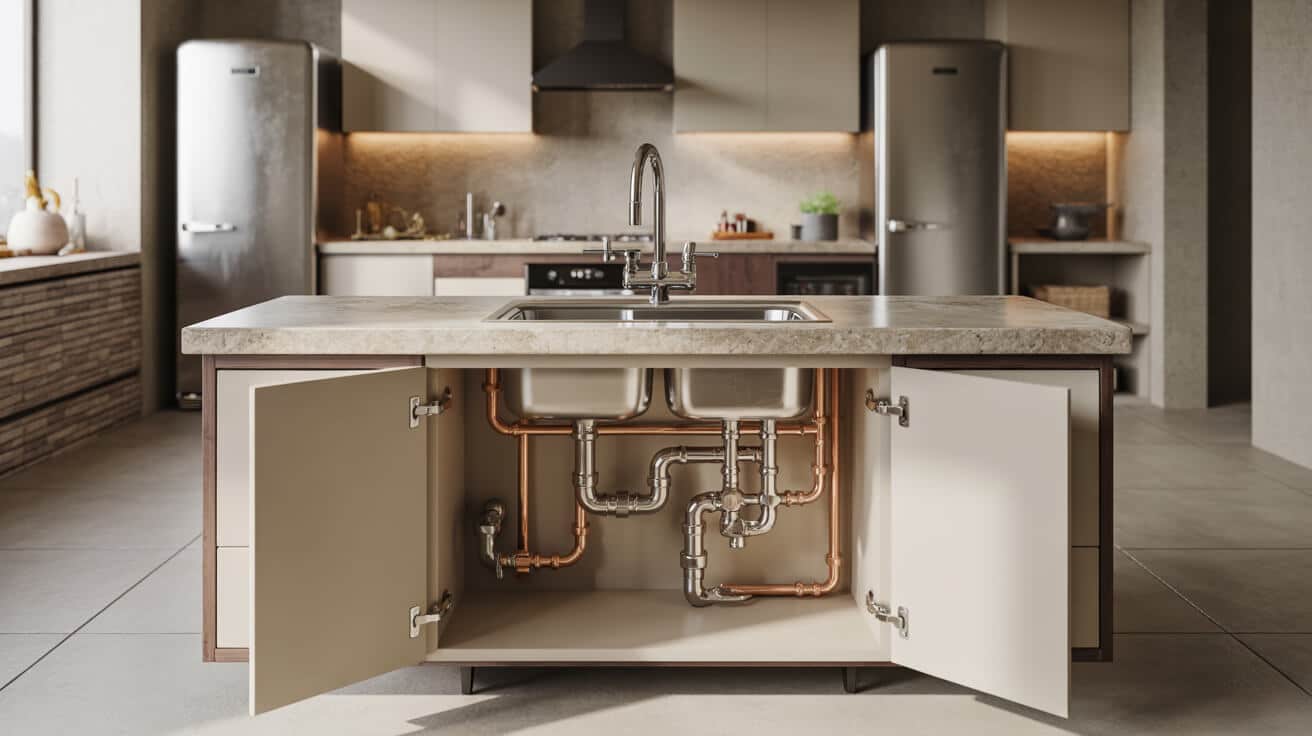Plumbing pipework is the conduit network that delivers water and thermal energy throughout homes, office buildings, factories, and critical infrastructure. From first-fix mechanical runs to the final visible bends beneath appliances, each segment must be engineered and executed with meticulous precision. Building owners, tenants, managers, and maintenance professionals rely on compliant pipework to ensure everyday health, comfort, and compliance with legal mandates.
In the United Kingdom, companies such as Plumbers 4U serve as trusted custodians of this technical domain, combining skilled labour, regulatory acumen, and responsive customer interfaces. Modern projects demand collaboration between your facility leadership, project managers, and inspection authorities, blending legacy infrastructure with advanced installation practices. Whether retrofitting a flat, upgrading a school, or launching a commercial development, robust pipework installation sustains water quality, energy performance, and enduring peace of mind.
Etymology or name origin
The term “pipework” synthesises “pipe” (from Latin pipa, tube or conduit) and “work,” originally signifying crafted systems assembled from modular parts. “Installation,” in the context of building trades, denotes not only the act of physically fitting pipes, but also the process of integrating networked systems through planning, execution, and validation. The United Kingdom’s plumbing lexicon expanded throughout the nineteenth and twentieth centuries, incorporating technical distinctions between pipework (the system) and plumbing (the craft or occupation). Usage patterns, such as “piping system,” are more prevalent in the United States and some global regulatory codices.
Overview / context
Pipework forms the physical skeleton that transports essential resources within built environments. A thorough installation traverses hidden cavities, mechanical risers, service voids, and external trenches, linking main supply, heating sources, and waste outlets. Water supply lines, heating circuits, and drainage runs each impose unique technical and regulatory requirements, dictating material and joint selection, route planning, and system hydraulics.
Successful installation projects depend on capable contractors, such as Plumbers 4U, to interpret design intent, coordinate building works, and shepherd projects from concept to certified completion. Stakeholder roles range from your property’s design and specification phase to ongoing maintenance and periodic compliance upgrades. The reliable performance of pipework installation underpins the integrity of your company’s real estate, safeguarding asset value and operational resilience over decades.
History
Origins
Archaeological evidence traces the beginnings of organised pipework to ancient Mesopotamia, Egypt, Greece, and Rome, where early techniques employed baked clay, hollowed timber, and cast lead to route water to homes, fountains, and public baths. The use of aqueducts, cisterns, and early syphons in Roman civilization cemented the core principles underlying today’s distribution networks.
Industrial emergence
The Industrial Revolution elevated demand for sophisticated pipework. Cast iron, copper, and galvanised steel replaced organic media, delivering higher pressure capabilities and resistance to internal corrosion. Threaded joints and standard pipe sizing enabled prefabrication, improving quality control. Municipal water mains and public sewer projects codified installation as a sector discipline. The evolution of engineering unions and early building standards prompted consistent skills development, enhanced troubleshooting, and sharper demarcation between plumbing, heating, and drainage subtrades.
Contemporary evolution
By the late twentieth century, pipework technology diversified rapidly, spurred by advances in polymer chemistry and mechanical engineering. Crosslinked polyethylene (PEX), polybutylene (PB), and multilayer composites now offer enhanced corrosion resistance, durability, speed of installation, and lower embodied energy. Regulatory frameworks such as the Water Supply (Water Fittings) Regulations 1999, WRAS, and harmonised British Standards (e.g., EN 806) codified installation methods, product approvals, and testing protocols. Building information modelling (BIM) and computer-aided design further merged the planning of pipework installation with digital asset management, lifecycle documentation, and cross-trade coordination.

Concept / description
A pipework system consists of a methodically arranged network of pipes, fittings, valves, anchor points, and insulation, designed to transfer fluids (water, heat transfer fluids, or waste) within the spatial and regulatory context of your building. Key constituents include:
- Pipes: Produced of copper, stainless steel, or plastic polymers; selected for pressure, temperature, and compatibility with service fluids and building environments.
- Fittings: Tees, elbows, reducers, unions, couplers, and adapters that direct flow, provide branch connections, or facilitate maintenance.
- Valves: Stopcocks, isolation valves, balancing valves, and thermostatic mixing valves, embedded to enable system control, maintenance, and safety.
- Supports & Anchors: Brackets, hangers, and expansion joints that absorb thermal movement, maintain alignment, and prevent vibration and wear.
- Insulation: Applied selectively to minimise thermal loss, guard against condensation, and comply with statutory energy efficiency requirements.
Pipework is classified by domain: supply (potable and non-potable), heating (sealed or vented), and drainage (gravity or pumped). These elements must function in harmony across service layers, integrating with terminal devices (taps, WC pans, radiators), and incorporating performance features such as backflow prevention, anti-legionella design, and noise attenuation.
System hierarchy and technical flows
At the macro level, system hierarchy progresses from point of entry/service to risers, branch lines, manifolds, and outlets. Main runs provide distribution to different zones or departments, with branch connections delivering water or heat to specific appliances.
| Layer | Function | Typical Materials | Regulatory Driver |
|---|---|---|---|
| Main/Trunk | Supply core services | Copper, PEX, Steel | Water Regs, BS EN 806 |
| Branch | Local distribution | PEX, PB, Copper | WRAS, Energy Regs |
| Outlet | Final delivery | Brass, CPVC | Part G/H, Appliance Codes |
The interface between supply and heating, or between drainage and building envelope, mobilises specialist skills to ensure long-term reliability and compliance.
Functionality / purpose / applications
Pipework installation delivers systemic functionality to almost every built environment:
- Potable water distribution: ensures safe, contaminant-free drinking water, extending from main entry to outlets such as basins, kitchens, and utility rooms.
- Hot water delivery and storage: supports personal hygiene, kitchen sanitation, and thermal comfort, connecting heating sources to storage cylinders, mixing valves, and heat emitters.
- Central heating distribution: circulates heated water from boilers or district heating interface units to radiators, convectors, underfloor circuits, and storage vessels.
- Greywater and blackwater drainage: guides used water and waste through vented stacks, surface water systems, gulley traps, and, in some contexts, roof drainage.
Specialised applications
Adaptation is routine in:
- Multi-occupancy dwellings: zoning, flow control, and risk-managed backflow protection.
- Commercial complexes: High-pressure requirements, fire suppression integration, facility-wide asset management.
- Healthcare/critical: Enhanced backflow prevention, anti-microbial piping, fail-safe redundancy, and rigorous documentation.
- Heritage sites: Selective retention of legacy lead or cast iron, with protective adaptation to modern standards.
Pipework transcends the visible, preserving asset quality while integrating the lifecycle needs of your property, tenants, and organisation.
Classifications / types / variants
Distinct types of pipework installations map to system function and context:
- Direct and indirect supply systems: Direct draws water from the mains supply for all outlets, while indirect systems store water in tanks before distribution, popular in traditional British installations.
- Vented and sealed heating circuits: Vented systems use atmospheric pressure and header tanks; sealed systems employ expansion vessels and pressure gauges, a modern default for most new builds.
- Gravity-fed and pumped drainage: Gravity systems utilise pipe gradient for waste removal, while pumped installations enable flexible layout, often in commercial basements or high-density developments.
- Above-ground and below-ground pipework: Above-ground runs support rapid inspection and easy retrofit, while below-ground is chosen for durability, frost protection, and landscape connectivity.
- Legacy (lead, steel, cast iron) and modern (copper, PEX, PB, multilayer): Properties may feature hybrid networks, requiring careful mapping and compatibility analysis.
Decision-making in classification is driven by regulatory code, user needs, site limitations, and maintenance/upgrade planning anticipating your facility’s future operating needs.
Systems / tools / methodologies
Architectural sub-systems
- Manifolds: Central components that facilitate balanced distribution, management of flow rates, and fault isolation.
- Risers: Vertical service runs, often shared between floors; critical for multi-unit dwellings or commercial properties.
- Branch circuits: Horizontal distribution lines, typically running above suspended ceilings, under floors, or in service voids.
Professional toolsets
| Tool Type | Common Uses | Safety / QA Relevance |
|---|---|---|
| Pipe cutters | Precision cutting, burr-free ends | Clean joint prep, leak prevention |
| Pipe benders | Custom bends, reduce need for angled fittings | Maintains flow rate, reduces joint count |
| Press-fit/Push-fit guns | Fast, flame-free jointing | Fire-safe, speeds large installations |
| Soldering torches | Traditional jointing, copper/bronze fittings | Skilled craft, fire risk management |
| Leak detectors | Acoustic or dye-based for QA and maintenance | Enables rapid diagnosis |
| Pressure testers | System integrity verification | Regulatory requirement |
Contemporary methodologies
Modern building codes increasingly favour modular, prefabricated piping assemblies, off-site fabrication, and digital workflow integration. Installation protocols vary for new build and retrofit environments, balancing asset protection, your scheduling needs, and regulatory inspection routines.

Stakeholders / entities involved
Successful pipework installation projects hinge on complex coordination among:
- Plumbing and heating companies (e.g., Plumbers 4U): Project management, end-to-end delivery, warranty assurance across domestic and commercial sectors.
- Licenced installers/engineers: Practical system assembly, compliance with specification, on-the-ground documentation, safety protocol adherence.
- Facility managers and owner-operators: Define technical needs, coordinate with construction teams, oversee record retention.
- Landlords and letting agents: Notify tenants, facilitate access, ensure asset compliance prior to leasing.
- Local authority officers: Plan approval, site inspections, environmental health enforcement.
- Warranty and insurance providers: Risk assessment, claims validation, lifecycle support.
- Manufacturers and suppliers: Product provision, installation guidance, conformance testing, technical support.
- Multitrade contractors: Integration of pipework with electrical, gas, or fire safety systems.
Strong project communication, documentation, and customer handover processes enable effective asset stewardship long after installation completes.
Legal / regulatory / ethical considerations
Pipework installation is regulated by overlapping codes and full traceability requirements:
- Regulations: UK Water Supply (Water Fittings) Regulations 1999, Building Regulations Parts G (Sanitation), H (Drainage), L (Energy), as well as EN 806 standards for design, installation, testing, and maintenance.
- Approvals and certifications: WRAS for approved fittings/materials, Gas Safe Register (heating connections), G3 for unvented hot water systems, WaterSafe for capable contractors.
- Documentation/obligations: As-built drawings, commissioning certificates, serviced operation and maintenance manuals, and notification of “notifiable” works to building control.
- Insurance and warranty: Up-to-date certifications are required to validate policies and property resale; warranty provisions depend on full compliance and traceable product selection.
- Ethical conduct: Accurate specification, material traceability, attention to your health/safety requirements, and resource stewardship during procurement and site works.
Awareness and compliance with these obligations protect your assets from liability, attacks on insurance validity, and costly service failures.
Performance metrics / data / measurements
Reliability and efficiency are quantified through objective indicators:
- Pressure tests: Static/dynamic pressure readings before handover; mandatory in all commercial/public and most domestic jobs; failures trigger remedial action and possible retesting costs.
- Flow measurements: Litres per minute, ensuring supply exceeds regulatory and service standards for intended fixtures.
- Temperature readings: Validation of heating circuits, ensuring thermal output at radiators, underfloor elements, or hot water taps.
- Noise/vibration checks: Identify problem areas (e.g., water hammer, pipe movement) using acoustic or vibration analysis tools.
- QA and commissioning records: Structured as checklists or digital logs, compiled by your installer and submitted as part of project close-out.
Table: Example commissioning targets for common installations
| System | Pressure Test (bar) | Flow Rate (l/min) | Max Noise (dB) |
|---|---|---|---|
| Domestic HWS | 10 | 22–30 | 35–40 |
| UFH Loop | 6 | N/A | 30 |
| Radiators | 3–4 | N/A | 30–35 |
| Commercial | 10+ | >35 | Site Specific |
Periodic auditing and digital O&M integration by your company supports efficient long-term compliance.
Challenges / barriers / limitations
The intricate nature of pipework installation introduces several constraints:
- Technical complexity: Routing through congested service zones, achieving adequate gradients, and reconciling legacy and new infrastructure complicates design.
- Regulatory compliance: Code upgrades, notifications, and record-keeping demand continuous expertise and project tracking.
- Budget and scheduling: Scarcity of skilled labour, specification changes, and cross-trade interdependencies may challenge timeline and cost control.
- Emerging material science: Uncertainties surrounding new polymers, fire-safe applications, and circular economy requirements drive industry debate.
- Property protection: For occupied premises, balancing rapid response with minimal intrusion remains paramount in maintaining customer satisfaction.
Table: Common project pain points and mitigation strategies
| Challenge | Implicit Solution |
|---|---|
| Poor legacy mapping | Digital survey, phased replacement |
| Occupied property access | Flexible scheduling, off-site prefabs |
| Regulatory notification | Automated digital submission |
| Water quality sensitivity | Upgraded materials, on-site testing |
| Stakeholder disputes | Transparent project planning |
Effective management of these barriers minimises disruption and safeguards your asset’s long-term value.
Impact / influence / legacy
Expert pipework installation preserves and enhances a building’s integrity for generations:
- Functional assurance: Secure joints and proper gradient maintain water quality, energy efficiency, and end-user comfort.
- Safety: Correct design (e.g., anti-scald, fire penetration seals, non-return devices) is essential for regulatory approval and risk mitigation.
- Value preservation: Properties with transparent, certified installation fetch higher premiums and attract high-quality tenants.
- Environmental benefit: Efficient pipework conserves energy and water, reducing your operational costs and environmental impact.
- Professional culture: Your reputation as a building manager, owner, or maintenance director is tied to the reliability and compliance of your property assets; companies such as Plumbers 4U foster industry best practices and service transparency.
Future directions, cultural relevance, and design discourse
Pipework installation is forecast to continue evolving along intersecting technical and cultural trajectories:
- Sustainable transition: Market demand and building codes drive adoption of lower-carbon materials, modular assemblies, and water/energy conserving design; environmental certifications become prerequisites for high-value real estate.
- Digital integration: Ubiquitous digital planning tools, remote QA, and predictive analytics are expected to radically accelerate installation cycles and reduce error rates.
- Interdisciplinary training: The next workforce generation receives broader, system-focused education—cross-trained in mechanical, electrical, and building physics disciplines, ready to anticipate your property’s requirements in a changing climate.
- Evolving values: “Invisible” infrastructure is gaining cultural currency; asset holders, tenants, and operators demonstrate increased awareness of healthy, resilient, and properly maintained buildings.
- Brand-led trust: The prominence of service providers such as Plumbers 4U exemplifies the movement toward transparent, legally-grounded, and reliably communicated installation offerings that align closely with your company’s needs, organisational risk profile, and long-term strategic goals.

